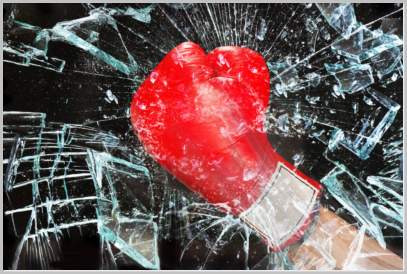A boxer’s fracture is a breaking of hand bone of the area that forms the knuckles. This fracture is also known as brawler’s fracture because a professional boxer is actually less likely to suffer this type of fracture. The less well-trained brawlers have to learn how to punch without hurting themselves.
The metacarpal bones in our hands connect bones in our finger to bones in our wrist. There are five metacarpal bones-1 that connect each of our fingers to our wrist. All metacarpal bones have similar anatomic structure. Each of the structure consists of base, shaft, neck, and head. The metacarpal bone base is the area that connects to the wrist bones. The shaft is long slender portion.
The neck is the bone portion that connects the shaft to the head. The metacarpal bone connects metacarpal bone to finger bone. The metacarpal bones head forms the knuckle of an enclosed first. A boxer fracture involves a fracture (hairline most times) in the metacarpal neck. This was explained in the fracture of the metacarpal bone of the smaller finger. This is among most vulnerable bone to break while punching.
Boxers fracture happens in the metacarpal bones that links the ring finger or smaller finger to our wrist. This bone is also called 4th and 5th metacarpal bones. Some physicians include fracture in the neck of the 2nd and 3rd metacarpal bones as boxer’s fracture. The 2nd metacarpal bone links the index finger to our wrist, and 3rd Metacarpal connects mid-finger to our wrist.

Causes
Boxer’s fracture got its name from its most common cause – punching an object with a closed fist. This fracture commonly occurs during fist fights or punching hard objects like wall, wood etc. These types of fractures usually happen when fist is closed, however they can also happen when your hand is un-clenched and hits a hard object.
Symptoms
The most common symptoms of boxer’s fracture are – pain & tenderness in a particular portion of hand corresponding to any one of metacarpal bones, surrounding the knuckle. Also, take is a boxer’s fracture symptoms if you feel pain in hand movement or fingers after some punching practice.
Snapping and popping sensation in the fist area is also a symptom of boxer fracture.
After Boxers Fracture, your hand can look swollen, discolored or bruised. Deformity of the fist is also an indication. The physician can gently press the fractured area to diagnose fracture. In addition, pain can be produced by moving the finger that is linked to the metacarpal bone which was hit. Gently pushing inwards toward also helps in confirming this fracture.
Additionally, making fist of the affected hand can show misalignment of suffering finger. You may not notice this but your doctor will notice this misalignment and deformity very clearly. In your fist, bended fingers lean unusually towards the thumb.
More severe types of boxers fracture is one with a cut which indicates a more serious type of boxer’s fracture.
Fracture Medical Care
When you suffer boxer fracture, contact your doctor immediately. If its weekend and doctor is not available, go emergency department for immediate x-ray diagnosis. If you’re splinted or casted but feel increase in pain, numbness, or tingling in the fingers of the casted arm, take doctor’s advice. Any fracture infection signs (in cut or stitched wound) also requires doctor’s care.
Healing time
If you think you have suffered this fracture, make sure you get physician’s advise. Most likely, it will heal in 8 to 10 weeks; however you can use herbal supplements to reduce healing time of your bones by as much as 40%.

